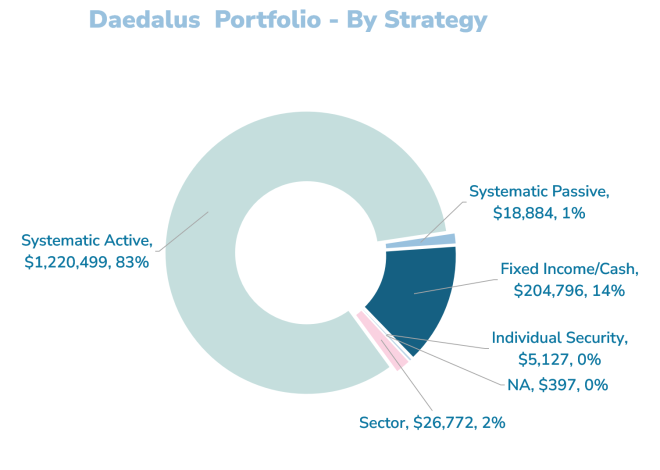
Optimizing Liquidity: How Foreign exchange and CFD Brokers Effectively Scale Up Their Operational Attain
Among the many many aspects by which brokers within the Foreign exchange and Contract for Distinction (CFD) markets compete, liquidity undoubtedly stands out as crucial. It’s essential to make sure that buying and selling actions on the platform run easily. When scaling, liquidity administration is not an afterthought; for brokers, it turns into a novel worth proposition that impacts the spreads, execution velocity and total volatility of the market.
Because the demand for trades retains rising and the market ever-changing, brokers are below strain. To stay aggressive, they should implement out-of-the-box liquidity administration options, subtle expertise methods and efficient danger administration. This text goals to debate the prominence of liquidity, the challenges confronted by brokers and the way they’ll streamline their operations and develop their brokerages alongside these challenges.
Understanding Liquidity In The Foreign exchange and CFD Markets
The time period liquidity means the convenience of shopping for or promoting an asset with out considerably altering the value of the asset. Probably the most broadly traded forex pairs on Forex similar to EUR/USD, GBP/USD and USD/JPY have very deep liquidity as a result of they’re traded in bulk. Compared, Forex in 2022 had an estimated day by day commerce quantity of seven.5 trillion {dollars}, the most important of any monetary market throughout the globe.
Excessive liquidity reduces the spreads and will increase the velocity of order execution making the value extra steady. That is helpful for each brokers and merchants. Nevertheless, there isn’t any explicit market with steady liquidity. In CFD buying and selling, liquidity relies upon upon the underlying property. Effectively-known indices such because the S&P 500 or FTSE 100 normally have adequate liquidity, however extra specialised property like some commodities or small-cap shares endure from excessive liquidity points.
For brokers, this poses an issue of how you can successfully allocate liquidity administration sources throughout varied asset courses so that there’s aggressive pricing and clean execution for the purchasers.
Significance of liquidity: Win or Lose Buying and selling Situations
Liquidity impacts each essential element of buying and selling together with spreads, execution, and even the velocity at which the market responds to exterior influences. Brokers who can correctly handle liquidity with minimal effort reap the advantages of higher buying and selling situations elevated earnings on consumer accounts and decreased time spent servicing purchasers.
1. Prices and spreads
Increased liquidity results in a rise in bid costs which implies extra purchasers are keen to buy and decreased promoting costs result in a lower within the dealer’s equilibrium value, in the end leading to lowered buying and selling bills.
In liquid markets, consumers and sellers compete inflicting a narrowing within the unfold, which in flip results in lowered buying and selling prices. Nevertheless, when there’s low liquidity out there or excessive volatility, spreads may be considerably bigger. For example, the typical unfold of EUR/USD below regular market situations is between 0.1 to 0.3 pips. In distinction, throughout occasions of market turmoil attributable to financial bulletins or geopolitical occasions, it will possibly exceed 5 pips.
Brokers that may supply liquidity successfully can provide tighter spreads making them extra enticing to merchants.
2. Pace of Execution and Slippage
The order execution velocity horizontal can be depending on liquidity. In a liquid market, orders are executed in actual time which leads to little to no slippage, or the distinction between the anticipated value of execution and the value at which a commerce could also be crammed.
However, in an illiquid market, even a small order will eat extra time to be executed resulting in elevated slippage, which may adversely have an effect on buying and selling outcomes. Merchants who make the most of high-frequency buying and selling methods and algorithmic merchants require fast order execution. This asserts the truth that brokers should keep a liquidity infrastructure that minimizes delays.
3. Stability and Volatility within the Market
Excessive ranges of liquidity contribute to the steadiness of the market as giant purchases and gross sales may be absorbed with little fluctuations in value. Nevertheless, low ranges of liquidity make even minimal trades resulting in elevated volatility on the charts as costs will swing considerably.
Area of interest commodities and rising market currencies typically endure from a scarcity of liquidity, thus making it very tough for brokers to fill orders at most popular value ranges. This places merchants and brokers at extra danger than they want to be.
Among the Most Necessary Obstacles in Managing Liquidity
As a lot as liquidity is essential for efficient buying and selling, brokers run into points when attempting to handle it optimally.
1. Decentralization
On account of there being numerous banks, monetary establishments and digital buying and selling peripherals, Foreign exchange and CFD markets have turn out to be very fragmented, which signifies that liquidity is just not concentrated in a single place. As a result of lack of centralized exchanges, it is vitally tough for brokers to effectively mixture liquidity.
With CFDs, liquidity may be much more tough as a result of it encompasses completely different asset courses similar to commodities, equities and cryptocurrencies. Brokers have to mix a number of completely different sources of liquidity which makes an optimum buying and selling atmosphere for the purchasers very tough.
2. Technological Infrastructure and Pace of Execution
To handle liquidity correctly, an establishment must possess subtle expertise that may combine a number of sources of liquidity, optimize order routing and execute trades inside microseconds. If brokers shouldn’t have a correct buying and selling system in place, they could expertise delays, value irregularities and poorly executed trades.
Brokers can decrease their bills and enhance their execution velocity in addition to the standard of their buying and selling by means of Sensible Order Routing (SOR), which robotically allocates trades to probably the most applicable liquidity suppliers. It’s equally essential to notice that high-frequency buying and selling (HFT) in addition to using low-latency networks and co-location providers in main monetary information facilities facilitates elevated effectivity in commerce execution.
3. Compliance
In several areas, brokers have to look at completely different units of compliance and regional insurance policies. Brokers are sometimes required to have a sure minimal stage of capital, have adequate transparency throughout buying and selling and be capable to establish and management danger ranges.
For instance, European regulators below MiFID II require that brokers present their finest execution insurance policies, whereas Australian laws dictate the consumer’s fund-specific protections. Moreover, the KYC and AML legal guidelines improve the time taken to onboard a consumer which may harm a dealer’s liquidity place.
Discovering the stability between compliance and liquidity effectivity is tough and requires superior compliance expertise and reporting instruments and addressing these laws is a problem by itself.
4. Danger from Liquidity Suppliers and Counterparty Social gathering Default
For coping with brokerage companies, counterparties, each non-financial and monetary embody hedge funds and banks. These events are important to the enterprise as they create liquidity when it comes to odds and execution. As at all times, counterparty danger is a critical danger. A default from a liquidity supplier may trigger a dealer to endure from a extreme lack of liquidity which might compromise execution in addition to result in colossal losses.
At first look, brokers must carry out diligence on liquidity suppliers, differ their sources of liquidity, in addition to make use of multi-bank aggregation to realize steady liquidity entry.
Find out how to Handle Liquidity Involvement: Engineering Extra Income for Brokers
Brokers want to include superior expertise into their liquidity administration for environment friendly scaling. Right here’s how brokers can handle liquidity effectively:
1. Aggregation of Multi-Suppliers of Liquidity
Aggregating looser liquidity suppliers will assist brokers mitigate dangers ensuing from poor execution and worsening spreads. Moreover, JPY Market Maker Brokers are additionally capable of deal with a number of Prime Banks and Tier-1 brokers to extend the obtainable liquidity.
2. Sensible Order Routing SOR Approach
The SOR algorithm scans a number of liquidity suppliers to pick out the optimum supplier in actual time to lower the unfavourable penalties of restricted slippage. Finest Obtainable Value Order eliminates slippage, thus bettering high-volume precision trades.
3. Low-Distance Infrastructure
For Excessive Frequency and Algorithmic merchants, high-speed fibre optic networks, co-location providers and AI-powered execution algorithms can result in improved buying and selling velocity and excessive efficient charges.
4. Danger Administration and Compliance Automation
Automation in e-reporting makes it simpler for brokers to generate studies that meet world requirements and take away the necessity for guide work. Utilizing instruments which might be AI-powered helps brokers test liquidity dangers, counterparty publicity and regulatory compliance in real-time.
5. Hedging Methods for Danger Discount
Brokers can hedge in opposition to the dangers of liquidity throughout occasions of crises by putting in counterbalancing measures like choice writing and others throughout occasions of uncertainty.
To Sum Up
Harnessing liquidity is essential to the success of FX and CFD brokers and to bettering their IT infrastructure. We contemplate that the implementation of the clever liquidity optimization system permits brokers to extend the velocity of order execution, scale back danger and develop their enterprise.
When applied sciences change, the extent of funding into liquidity mixture methods, expertise for execution and automating compliance to laws must develop. Brokers who automated account opening will be capable to set higher situations for his or her purchasers and achieve extra market in the long term.
It is a sponsored submit.

